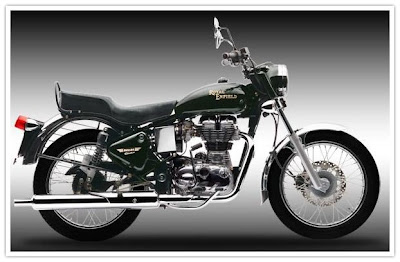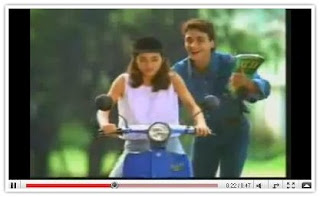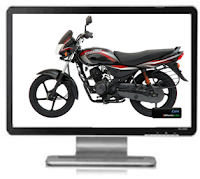Royal Enfield launches its Bullet Electra 350 cc model with the new Twin spark, Unit Contruction Engine..
The 350 cc Thunderbird Twinspark was the first model from Royal Enfield to get the Twinspark UCE engine. The Classic 500 and 350 were the next two models to get the Twinspark UCE treatment and launched in India in November 2009.
I am sure that the original Bullet models (with cast iron engine) will now become prized collectors items..!!
Also at the start of 2010, Royal Enfield had made public that the Twin Spark UCE engine would replace the original cast iron engines from the "Bullet Electra 350" and "Bullet Standard 350" models.
True to its word, Royal Enfield has launched the Bullet Electra 350 cc with the Twinspark UCE engine (Details of the new model has appeared on its website).

Price Update (23,rd March): Prices starting at Rs. 89,846 (ex-Chennai) and going up to Rs. 93,846 for the kick start and electric start variants respectively
The 2010 Bullet Electra retains its original styling and comes with options of a front disc brake and electric start. The exhaust though is a a bit too long. With the long exhaust and the original cast iron engine replaced, the original "Bullet Thump" would certainly be now muffled in these 2010 models. But with new BS III (Bharat Stage III) pollution norms coming into force across India from April 2010, the "heart transplant" was probably inevitable.
Accoridng to Royal Enfield's website: "Along with the UCE engine come the double benefits of more power , and better fuel economy, more reliability and lesser maintenance".
Lets hope that the new 2010 range of models from Royal Enfield turn out to be more reliable than its older models. Now the other model which is awaiting a similar "Twinspark UCE" treatment is the Bullet Standard 350 model.
Visit the Royal Enfiled India website:
Colors: Red, Black and Silver
2010 Royal Enfield Bullet Electra 350, Technical Specifications:
Engine
- Engine: Single Cylinder, 4 Stroke, OHV, air cooled, Twinspark
Displacement: 346 cc
Bore x Stroke: 70mm x 90mm
Compression Ratio: 8.5 : 1
Maximum Power: 19.8 bhp @ 5250 rpm
Maximum Torque: 28 nm @ 4000 rpm
Transmission: Constant Mesh 5 speed
Ignition: Digital TCI
Carburetor: BS29 / UCAL
Dimensions
- Ground Clearance: 140 mm
Width: 810 mm
Wheel Base: 1370 mm
Length: 2140 mm
Height: 1120 mm
Seat Height/Saddle Height: 800 mm
Tyres
- Front: 3.25 x 19"
Rear: 3.25 x 19"
Electricals
- Electrical System: 12v - DC for ES / 12v - AC/DC for KS
Head lamp: 12v, 35/35w
Battery: 12v - 14AH MF for ES, 12v - 5AH for KS
Tail Lamp: 12v, 5w
Brakes
- Front: Hydraulic 280mm Disc
Rear: 153 mm Drum
Suspension
- Front: Telescopic, hydraulic damping, stroke 130 mm
Rear: Swing arm with gas shock absorbers, Stroke 80 mm
Vehicle
- Fuel Tank Capacity: 13.5 ltr (min)
Engine Oil Grade: 15w, 50 API, SL Grade jaso ma
Weight(Kerb): KS: 180 kg, ES: 183 kg
Maximum Speed: 120 kmph
Related Posts
- Royal Enfield in Colombia
- Royal Enfield to put its UCE (Unit Construction Engine) across all its models in 2010 + Royal Enfield @ Auto Expo 2010
- 500 C.C Royal Enfield Classic EFI to be on sale in Europe in 2009..!! [Wallpapers]
- Royal Enfield launches Thunder Bird Twin Spark in India
Disclaimer:
This is to remind that the Views or Opinions in the blog are entirely mine unless explicitly stated. The Views and Opinions published in this blog should in no way be related to any other person or organization associated -- directly or indirectly -- with me.



 Likes:
Likes:




















